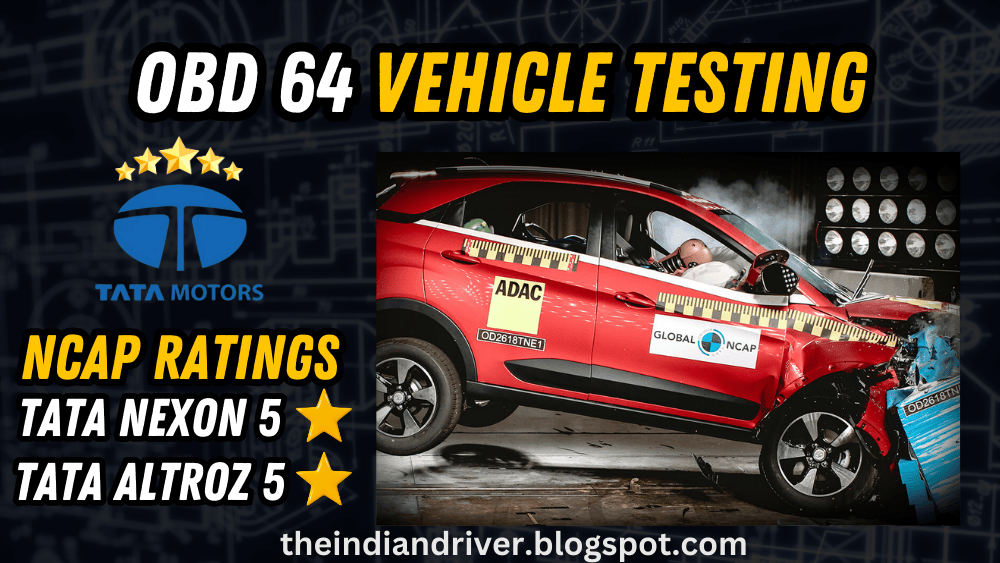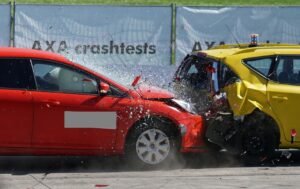The OBD 64 Vehicle Test: Ensuring Safety on the Road
Safety is a top priority for car manufacturers. One key test used to evaluate vehicle safety is the OBD 64 test. This test helps ensure that cars can protect passengers in real-world crash scenarios. Let’s take a closer look at what this test involves and why it matters.
What is the OBD 64 test?
The OBD 64 test stands for Offset Deformable Barrier at 64 km/h. It simulates a common type of crash where only part of a car’s front end hits an obstacle. Here’s how it works:
-
A car is driven at 64 km/h (about 40 mph) into a deformable barrier
-
The barrier is offset, so only 40% of the car’s front width makes contact
-
This setup mimics a typical collision between two cars
The test measures how well the car’s structure absorbs the impact and protects the people inside.
Why is this test important?
Most real-world crashes aren’t head-on collisions. They often involve just part of the car’s front end. The OBD 64 test reflects these common scenarios. It helps car makers design vehicles that can handle these types of crashes.
The test looks at several key factors:
-
How much the passenger area gets crushed
-
Whether doors can still open after the crash
-
How well airbags and seatbelts work
-
The forces experienced by crash test dummies
By performing well in this test, car manufacturers show their vehicles can protect occupants in realistic crash situations.
How do car makers prepare for the OBD 64 test?
Designing a car to perform well in the OBD 64 test takes careful planning. Engineers use several strategies:
-
They create strong “crumple zones” in the front of the car to absorb impact
-
They reinforce the passenger area to prevent it from collapsing
-
They use computer simulations to test designs before building physical prototypes
-
They conduct many practice crash tests to refine the design
This process can take months or even years of work before a car is ready for production.
What happens during the test?
On test day, here’s what typically occurs:
-
The car is prepared with sensors and crash test dummies
-
It’s accelerated to exactly 64 km/h
-
The car hits the offset barrier
-
High-speed cameras capture every detail of the impact
-
Engineers analyze the results, including:
-
How much the structure deformed
-
Whether the airbags deployed correctly
-
The forces recorded on the crash test dummies
-
The entire crash is over in a fraction of a second, but the analysis can take weeks.
What are car makers aiming for?
The goal of the OBD 64 test is to show that a car can protect its occupants in a serious crash. Here’s what a good result looks like:
-
The passenger area stays largely intact
-
The front of the car crumples in a controlled way, absorbing energy
-
Airbags deploy at the right time and protect the dummies
-
Doors can still be opened after the crash
-
The steering column doesn’t push back into the driver’s space
Car makers aim to score well in official crash tests, which often include the OBD 64 scenario. A good score can be a major selling point for safety-conscious buyers.
Real-world benefits
The OBD 64 test isn’t just about passing a test. It leads to real improvements in car safety. Here are some examples:
-
In the 1990s, many cars performed poorly in offset crashes. Today, thanks in part to this test, most vehicles handle these impacts much better.
-
The test has encouraged the development of stronger materials and better car designs.
-
It has pushed car makers to improve airbag systems and seatbelts.
These advancements have helped reduce injuries and save lives in real crashes.
Case study: Tata Motors and the OBD 64 test
Let’s look at how one car maker, Tata Motors, approaches the OBD 64 test. Tata is known for prioritizing safety in its vehicles. Here’s how they prepare for and perform in this crucial test:
Preparation:
Tata’s engineers start by using advanced computer simulations. These allow them to test many different designs quickly. They look for ways to:
-
Strengthen the car’s structure without adding too much weight
-
Create effective crumple zones to absorb impact
-
Ensure the passenger area stays intact
Once they have a promising design, they build prototypes for physical testing. Tata conducts many internal crash tests, refining the design each time.
Test performance:
In recent years, Tata vehicles have performed well in OBD 64 tests. For example:
-
The Tata Nexon compact SUV scored a 5-star rating in Global NCAP crash tests, which include the OBD 64 scenario.
-
The Tata Altroz hatchback also achieved a 5-star rating, showing consistent performance across different vehicle types.
These results show that Tata’s focus on safety is paying off in objective tests.
Key features:
Tata incorporates several features to help their cars perform well in the OBD 64 test:
-
Use of high-strength steel in critical areas of the car’s structure
-
Carefully designed crumple zones to absorb and distribute impact forces
-
Advanced airbag systems that deploy quickly and effectively
-
Reinforced passenger cell to maintain survival space
Beyond the test:
Tata doesn’t just focus on passing the test. They use the insights gained to improve overall vehicle safety. This includes:
-
Applying lessons learned to their entire vehicle lineup
-
Continuously updating designs based on the latest crash test results
-
Educating customers about the importance of vehicle safety
By taking this comprehensive approach, Tata aims to build cars that perform well not just in tests, but in real-world conditions.
The bigger picture
The OBD 64 test is just one part of a larger focus on vehicle safety. Other important factors include:
-
Additional crash tests (rear impact, side impact, rollover)
-
Active safety features like anti-lock brakes and stability control
-
Advanced driver assistance systems (ADAS) that can help prevent crashes
Car makers need to consider all these elements to create truly safe vehicles.
Challenges and limitations
While the OBD 64 test is valuable, it’s not perfect. Some challenges include:
-
It doesn’t represent all possible crash scenarios
-
Very small cars can sometimes perform well in the test but may be less safe in real-world crashes with larger vehicles
-
The test doesn’t account for factors like driver behavior or road conditions
Car makers and safety organizations are always working to develop new tests that address these limitations.
The future of crash testing
As car technology evolves, so do safety tests. Some emerging trends include:
-
Tests for electric and hybrid vehicles, which have different structures and potential hazards
-
Evaluations of advanced driver assistance systems and their effectiveness in preventing crashes
-
Virtual reality simulations that can test more scenarios than physical crash tests
These developments will help ensure that cars continue to get safer as technology advances.
What this means for car buyers
Understanding tests like the OBD 64 can help you make informed decisions when buying a car. Here are some tips:
-
Look for cars that perform well in official crash tests
-
Remember that safety features like airbags and strong structures are important, even if you can’t see them
-
Consider the full range of safety features, both active and passive
-
Don’t assume that a more expensive car is automatically safer – check the test results
By considering these factors, you can choose a vehicle that offers good protection in real-world driving conditions.
Conclusion
The OBD 64 test plays a crucial role in improving vehicle safety. It pushes car makers to design vehicles that can protect occupants in common crash scenarios. While it’s just one part of a comprehensive approach to safety, its impact has been significant.
Car manufacturers like Tata Motors have embraced this test, using it to develop safer vehicles. Their efforts show in strong test performances and, more importantly, in real-world safety improvements.
As a car buyer or driver, understanding tests like the OBD 64 can help you make informed choices. It’s a reminder that safety isn’t just about features you can see – it’s built into the very structure of well-designed vehicles.
The next time you see a car advertisement touting a good crash test rating, you’ll know that behind that score lies months of engineering work, careful design, and rigorous testing. It’s all part of the ongoing effort to make our roads safer for everyone.






3 comments